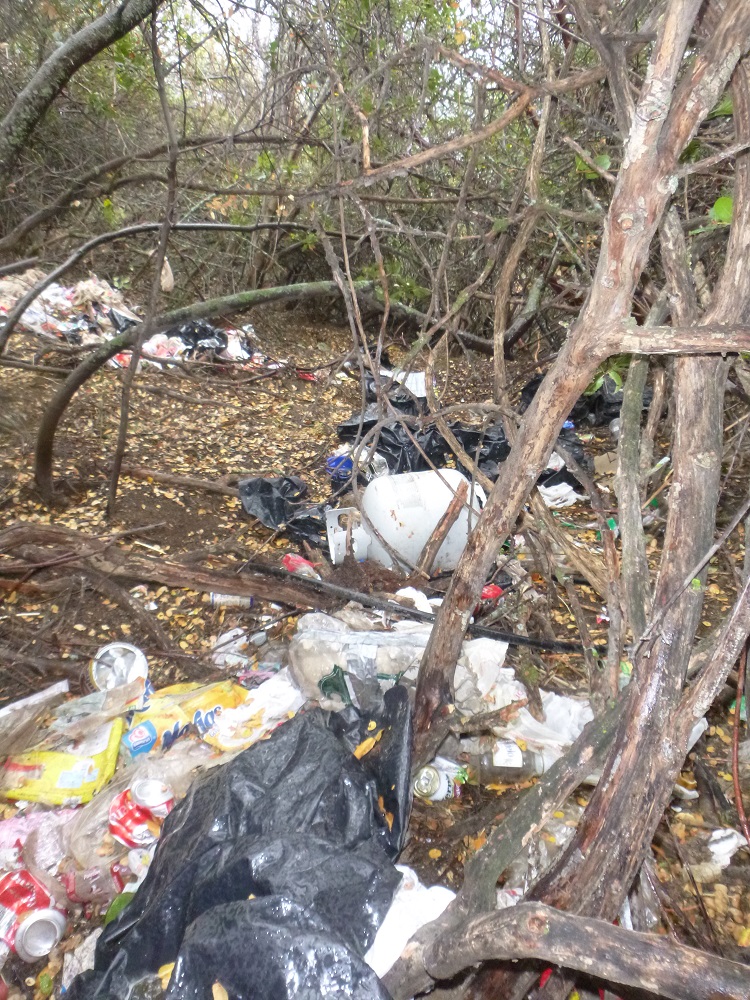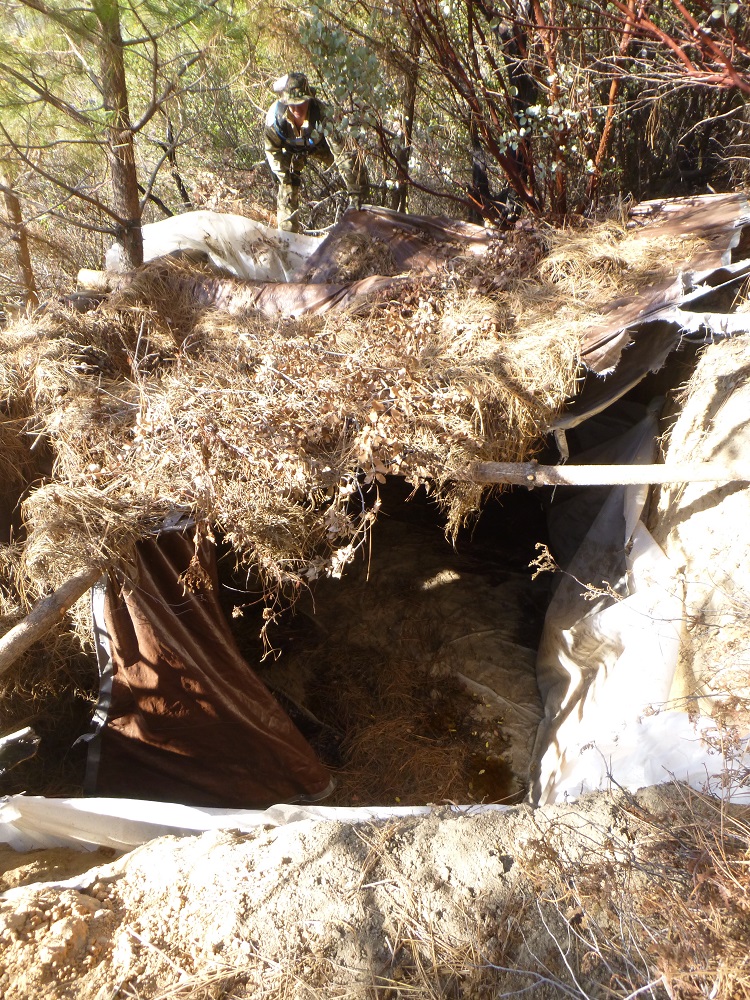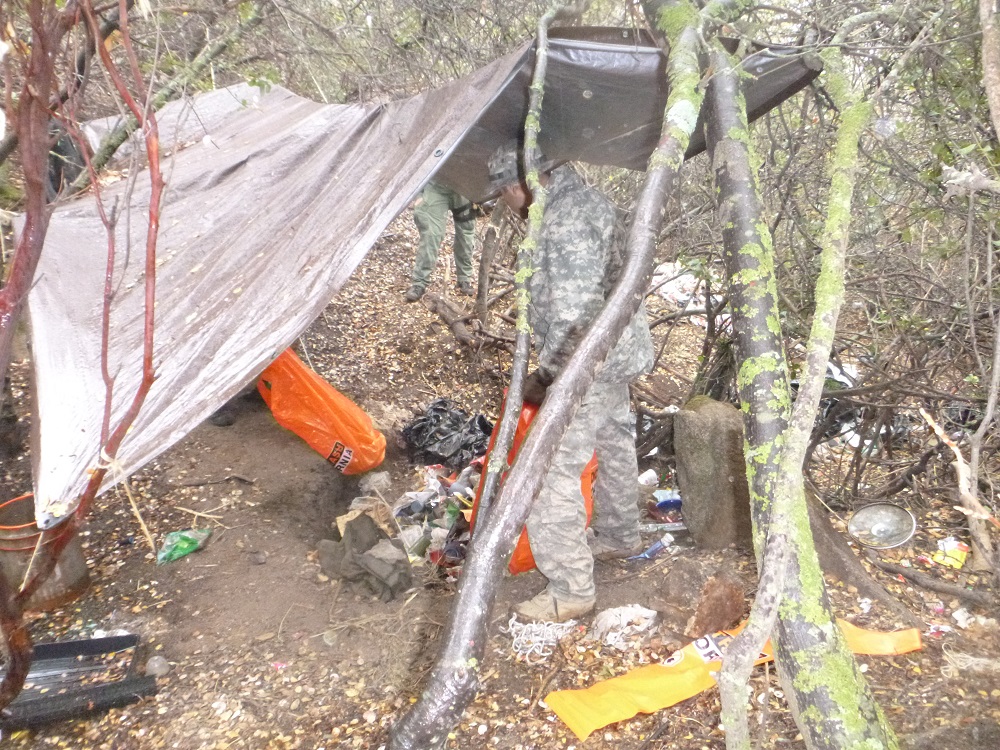SIERRA NATIONAL FOREST – University scientists studying the effects of forest thinning on a species of small mammal did not expect to find evidence of toxic chemicals in the organs of their subject, the Pacific fisher.
When post-mortem tests showed that fisher after fisher had the same significant amount of rodenticide in the liver, researchers looked not far afield and determined the origin of toxic chemicals to be illegal pot farms growing on public land.
Fishers are plush but rare members of the weasel family populating the forested area from California to Washington, including the Sierra Nevada. The nocturnal fisher has been illegal to trap since the 1940s and now the carnivorous creature has been the focus of recent conservation efforts as their habitat is continually threatened by logging and development.
 Sierra Nevada Adaptive Management Project (SNAMP) teams have monitored local pacific fishers to study all wildlife in a sort of canary-in-the-coal-mine kind of way. The purpose of SNAMP is to inform adaptive management efforts in the forest for best land practices when it comes to fire prevention, water and wildlife.
Sierra Nevada Adaptive Management Project (SNAMP) teams have monitored local pacific fishers to study all wildlife in a sort of canary-in-the-coal-mine kind of way. The purpose of SNAMP is to inform adaptive management efforts in the forest for best land practices when it comes to fire prevention, water and wildlife.
“Each team had a hypothesis as to what we would find in the seven-year study and none of them included rodenticide in any way, shape or form,” says Anne Lombardo, SNAMP community liaison.
The specialized SNAMP wildlife team has placed radio-tracking collars on about 100 fishers over the years, with around thirty collared at any given time, to learn the animals’ habits and habitat. In the course of the intensive study, some of the fishers died as would normally occur, for a variety of reasons including natural causes and predation. When the animals were studied post-mortem, researchers determined the presence of anti-coagulants indicating rodenticide in the livers of 90% of fishers observed.
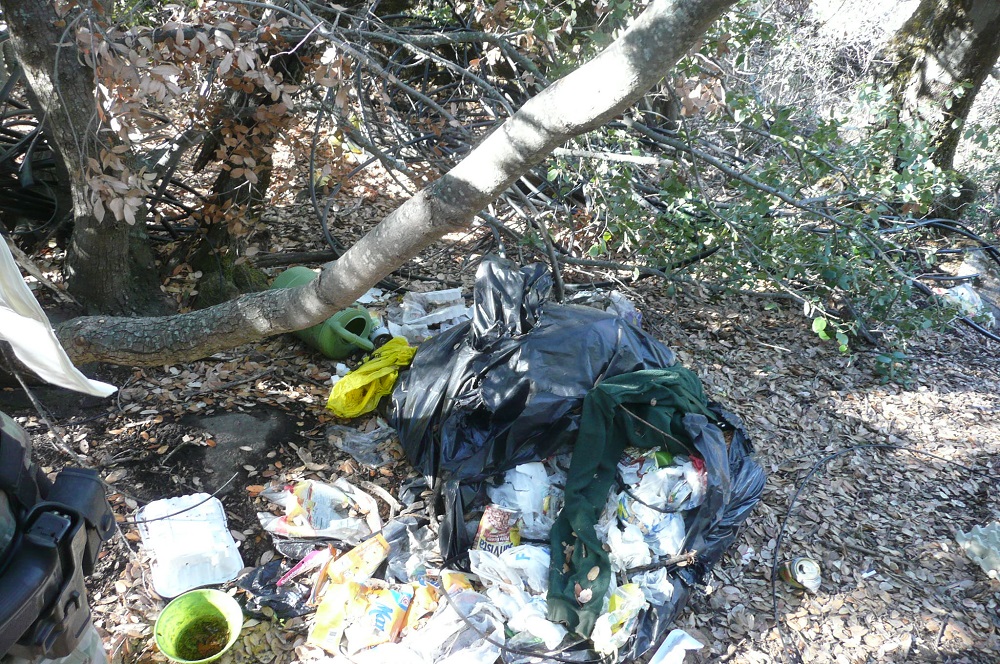 Searching for an explanation, they learned that dangerous chemicals including rodenticides, pesticides and fertilizer are frequently left behind on illegal marijuana grow sites. Growers often mix the chemicals in or nearby streams where wildlife is abundant. Big bags, bottles and barrels are left to rot and seep into the land and water, polluting the environment and likely affecting animals up and down the food chain.
Searching for an explanation, they learned that dangerous chemicals including rodenticides, pesticides and fertilizer are frequently left behind on illegal marijuana grow sites. Growers often mix the chemicals in or nearby streams where wildlife is abundant. Big bags, bottles and barrels are left to rot and seep into the land and water, polluting the environment and likely affecting animals up and down the food chain.
Typically, authorities may bust up the illegal grows or the growers exhaust their resources and harvest their crops, but either way, nobody sticks around to clean up the mess. Now, a group of agencies and individuals have banded together to clean up these old toxic sites in and around the foothills, and gradually return the public lands to their original pristine state, pre-cartels.
“SNAMP discovered the rodenticide poisoning issue in the fisher population, and we knew we needed to find some money to clean up the raided sites,” explains Lombardo. “That’s our contribution to putting science on the ground.”
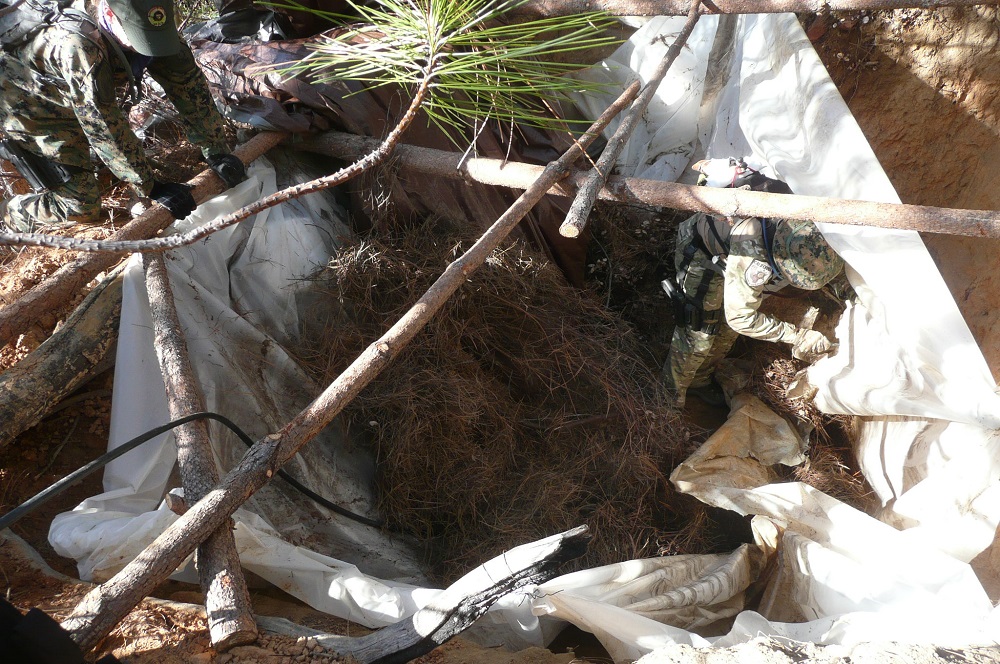 Last month, US Forest Service Law Enforcement and Recreation and Research personnel worked with the California Department of Fish and Wildlife’s Law Enforcement Division & Wildlife Investigations Laboratory, the California National Guard, and the High Sierra Volunteer Trail Crew’s Environmental Reclamation Team, to clean-up previously raided illegal marijuana grows on the Sierra and Sequoia National Forests.
Last month, US Forest Service Law Enforcement and Recreation and Research personnel worked with the California Department of Fish and Wildlife’s Law Enforcement Division & Wildlife Investigations Laboratory, the California National Guard, and the High Sierra Volunteer Trail Crew’s Environmental Reclamation Team, to clean-up previously raided illegal marijuana grows on the Sierra and Sequoia National Forests.
This operation took place from Nov. 5 – Nov. 14 with approximately 100 personnel who targeted 9 local sites and 4 others locations in the Shaver/Hume Lake area to eliminate the trash produced from these marijuana grows. According to Lombardo, the local areas covered included those adjacent to Oakhurst, Coarsegold, North Fork, Bass Lake, and places that feed into Lewis Creek and Willow Creek, and areas of Chepo Saddle and Bass Lake Vista.
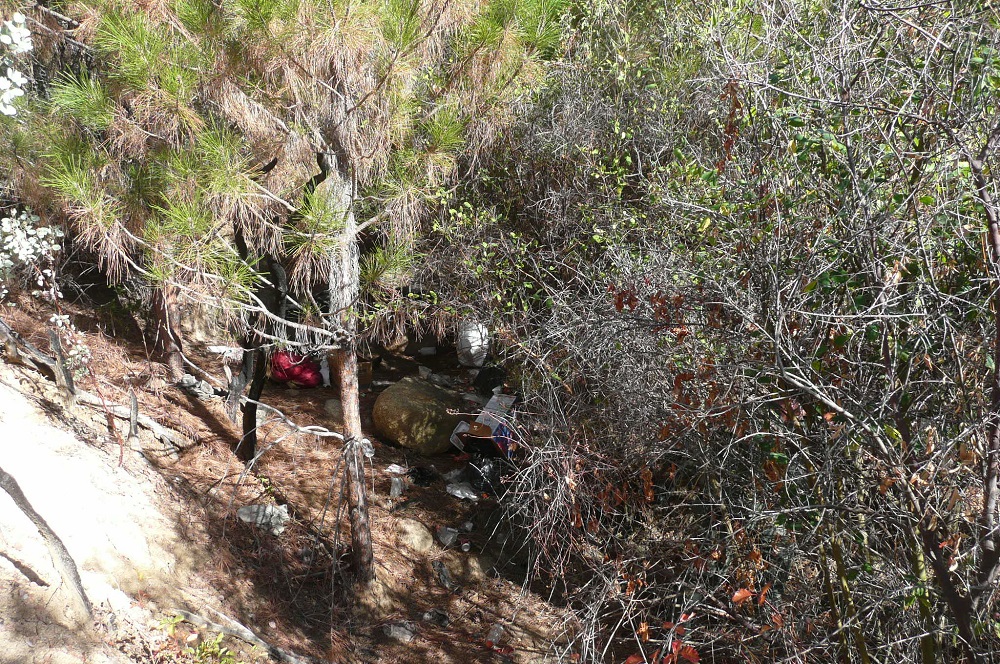 Lombardo says the proximity of some grow sites to family neighborhoods is alarming. Just a short drive, a couple of turns and a straight uphill hike from places where moms stroll with babies, the clean-up team discovered a well-hidden trail leading to the site of a former grow.
Lombardo says the proximity of some grow sites to family neighborhoods is alarming. Just a short drive, a couple of turns and a straight uphill hike from places where moms stroll with babies, the clean-up team discovered a well-hidden trail leading to the site of a former grow.
One of the locations tackled in the recent operation featured a massive, plastic lined dugout that growers had designed and used for mixing chemicals with water before irrigating the marijuana plants. Frequently, sites are located in very steep terrain between 3,000 – 5,000 feet elevation, and include a sleeping area, along with trails that go off in several different directions.
What crews rounded up this November in the process of cleaning up a total of 13 sites was 84 trash bags filled with various items, 14.8 miles of drip line and 116 bags of fertilizer. Rodenticides and pesticides, including dangerous carbofuran which is one of the most toxic carbamate pesticides, were also found and removed. A collective total of 3.5 tons of garbage were taken out under this operation.
“If you leave the infrastructure, which is the miles of piping, you do nothing to discourage the growers from coming back into your neighborhood.”
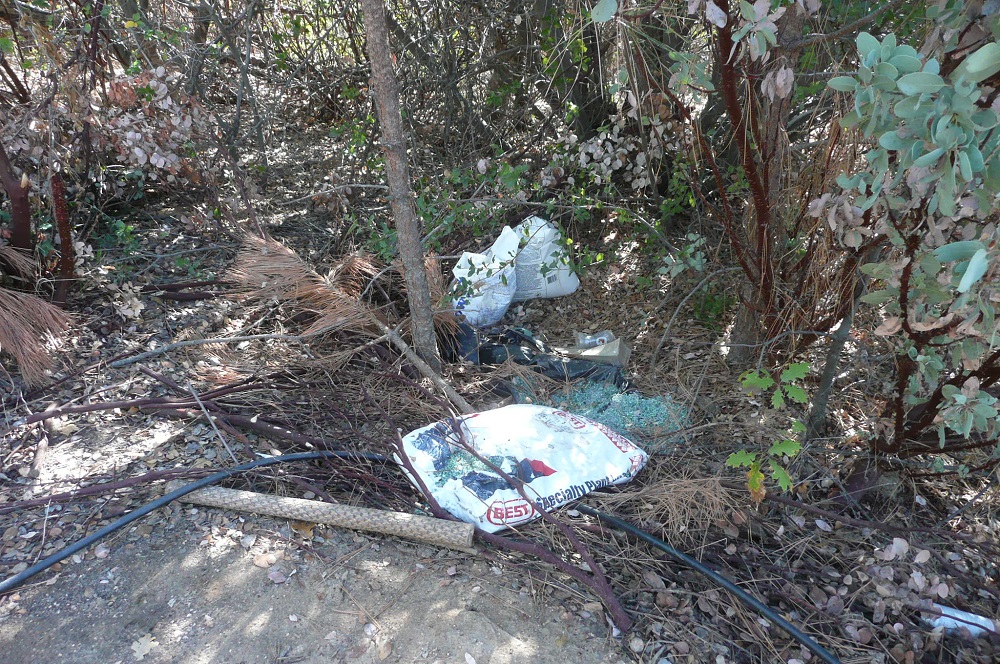 During the week of clean-up the team could clearly determine the difference between what they consider a “local grow” versus a “cartel grow.” In a locally farmed illegal grow site, authorities found bags of soil amendment, organic pesticide oil, and chicken wire to protect the plants from ground diggers. At what experts consider a “cartel grow,” the left-overs include not soil amendment but chemical fertilizer, and other chemicals including rat poisons, and the unmarked pink fluid they believe to be the super-toxic insecticide carbofuran.
During the week of clean-up the team could clearly determine the difference between what they consider a “local grow” versus a “cartel grow.” In a locally farmed illegal grow site, authorities found bags of soil amendment, organic pesticide oil, and chicken wire to protect the plants from ground diggers. At what experts consider a “cartel grow,” the left-overs include not soil amendment but chemical fertilizer, and other chemicals including rat poisons, and the unmarked pink fluid they believe to be the super-toxic insecticide carbofuran.
The objective of this clean-up effort, say the experts, was to restore habitat, and remove risks to wildlife by dismantling and remediating cultivation sites previously raided or partially cleaned up, and to document and remove all toxicants found.
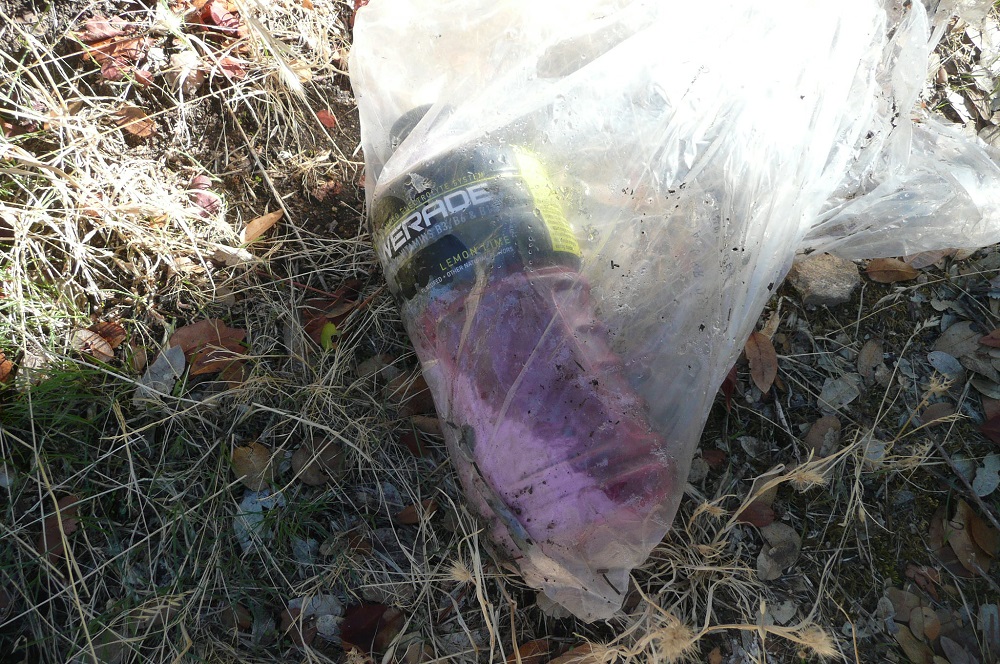 Following reports by the Sierra Nevada Adaptive Management Project, funding for the scientific documentation and reclamation of these trespass marijuana sites was provided through grants from the Picayune Rancheria of the Chukchansi Indians.
Following reports by the Sierra Nevada Adaptive Management Project, funding for the scientific documentation and reclamation of these trespass marijuana sites was provided through grants from the Picayune Rancheria of the Chukchansi Indians.
The grant was administered by the Yosemite Sequoia Research and Development Council and the Humane Society Wildlife and Trust.
